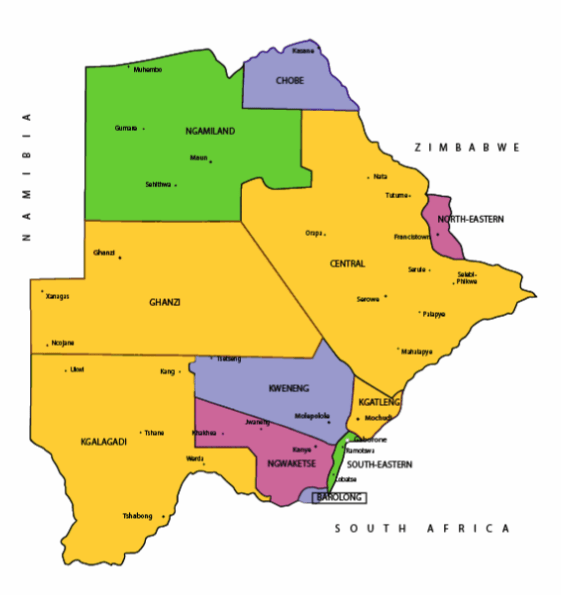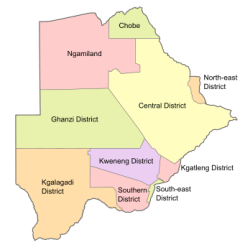Places and their polling stations in Sefhare-Ramokgonami, Botswana
171 Pilikwe-Maape
0840 Pilikwe Primary School
0841 Pilikwe Main Kgotla
0842 Bobirwa Borehole (Tent)
0843 Mhalapitsa Primary School
0844 Maape Kgotla (Mophaneng) (Tent)
0845 Maape Primary School (Taung)
0846 Pilikwe Community Hall
0847 Mhalapitsa Kgotla
172 Ramokgonami
0848 Ramokgonami Primary School
0849 Zcc – F028 (Tent)
0850 Play Ground (Near Dipula General Dealer) (Tent)
0851 Ramokgonami JSS
0852 Tebele’s Area (Tent)
0853 Lekobeng Standpipe (Tent)
173 Tumasera-Seleka
0854 Tumasera Kgotla
0855 Seleka Primary School
0856 Mokoba ZCC (Tent)
0857 Sesholo JSS
0858 Tumasera Primary School
0859 Seleka Kgotla
0860 Rasesa Kgotla (Tent)
0861 City Green Playground (Tent)
0862 Sedibana Standpipe (Tent)
0863 Tupswa Kgotla (Tent)
174 Mokobeng-Ngwapa
0864 Mokobeng Kgotla
0865 Mokobeng Primary School
0866 Mokobeng JSS
0867 Moimana Standpipe (Tent)
0868 Ngwapa Kgotla
0869 Martin’s Drift Police Station (Tent)
175 Chadibe-Borotsi
0870 Chadibe Primary School
0871 Chadibe Kgotla
0872 Mmadirubi (Tent)
0873 Full Gospel Healing Church (Fghc) (Tent)
0874 Borotsi Kgotla
0875 Mathako Primary School
0876 Mathako Kgotla
176 Sefhare
0877 Mmutle Primary School
0878 Njanhela Kgotla (Tent)
0879 Sefhare Primary School
0880 Seruleng Standpipe (Tent)
0881 Maifala Kgotla (Tent)
0882 Letotswana Standpipe (Tent)
0883 Lesung Kgotla (Tent)
0884 Mokoba Tree (By Sefhare Primary School) (Tent)
0885 Bobirwa Kgotla (Tent)
0886 Sefhare Main Kgotla
177 Machaneng-Moshopha
0887 Machaneng Community Hall
0888 Letoreng Kgotla
0889 Roads Offices (Tent)
0890 Machaneng Primary School
0891 Moshopha Primary School
0892 Moshopha Kgotla
0893 Moroka Kgotla (Tent)
0894 Mosikari JSS
Reference: iec.gov.bw/index.php/electoral-districts/polling-stations.html
Botswana
Botswana is a country in Africa. It is topographically flat, with approximately 70 percent of its territory being the Kalahari Desert.
It is bordered by South Africa to the south and southeast, Namibia to the west and north, and Zimbabwe to the northeast.
Capital: Gaborone
Currency: Botswanan Pula
Official language: English
Population: 2.588 million (2021) World Bank
Dialing code: +267
Gross Domestic Product: 17.61 billion USD (2021) World Bank
Botswana’s ten districts are:
- Southern District
- South-East District
- Kweneng District
- Kgatleng District
- Central District
- North-East District
- Ngamiland District
- Kgalagadi District
- Chobe District
- Ghanzi District
Botswana’s councils created from urban or town councils are: Gaborone City, Francistown, Lobatse Town, Selebi-Phikwe Town, Jwaneng Town, Orapa Town and Sowa Township.






The name Botswana refers to ‘Land of the Tswana’. The landlocked, Southern Africa country is officially known as the Republic of Botswana.














Botswana is connected to Zambia through the Kazungula Bridge making it the world’s shortest border between two countries.
A country of slightly over 2 million people (2021), Botswana is one of the most sparsely populated countries in the world. It is essentially the nation state of the Tswana ethnic group, who make up 79% of the population.

About 11.6 per cent of the population lives in the capital and largest city, Gaborone.
Formerly one of the world’s poorest countries—with a GDP per capita of about US$70 per year in the late 1960s—it has since transformed itself into an upper-middle-income country, with one of the world’s fastest-growing economies.


The Tswana ethnic group were descended mainly from Bantu-speaking tribes who migrated southward of Africa to modern Botswana, living in tribal enclaves as farmers and herders.




In 1885, the British colonised the area and declared a protectorate under the name of Bechuanaland.
As colonisation stopped, Bechuanaland became an independent republic under its current name on 30 September 1966.


Since then, it has been a representative republic, with a consistent record of uninterrupted democratic elections and the lowest perceived corruption ranking in Africa since at least 1998.

The economy is dominated by mining and tourism. Botswana has a GDP (purchasing power parity) per capita of about $18,113 as of 2021, one of the highest in subsaharan Africa.


Botswana is the world’s biggest diamond producing country.
Its relatively high gross national income per capita gives the country a high standard of living and the third-highest Human Development Index of continental Sub-Saharan Africa (after Gabon and South Africa).
The country has been adversely affected by the HIV/AIDS epidemic. In 2002, Botswana began offering anti-retroviral drugs (ARVs) to help combat the epidemic.
Botswana is a member of the Southern African Customs Union, the Southern African Development Community, the Commonwealth of Nations, and the United Nations.
